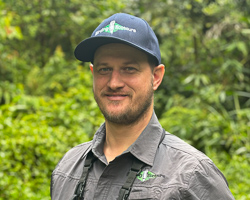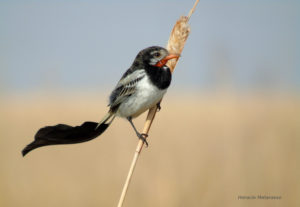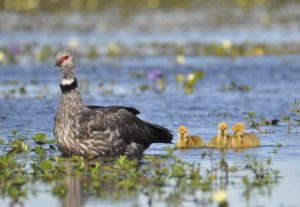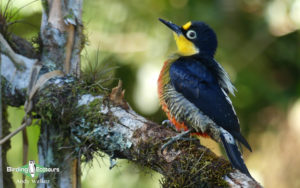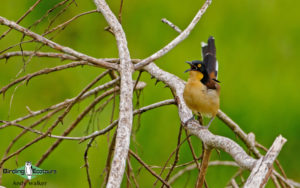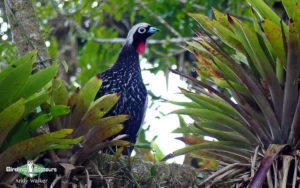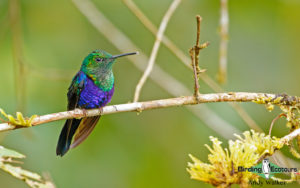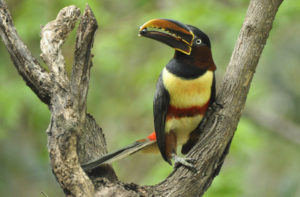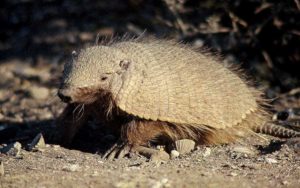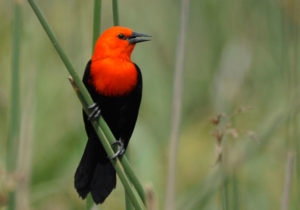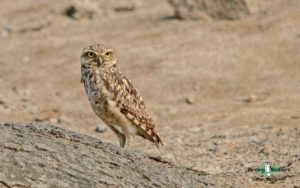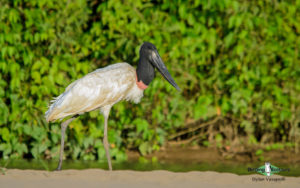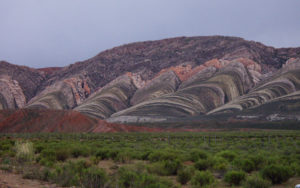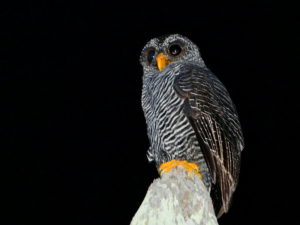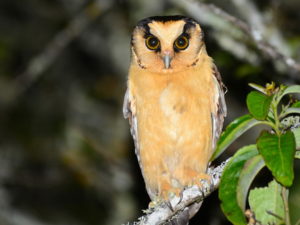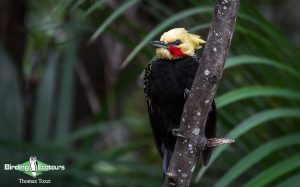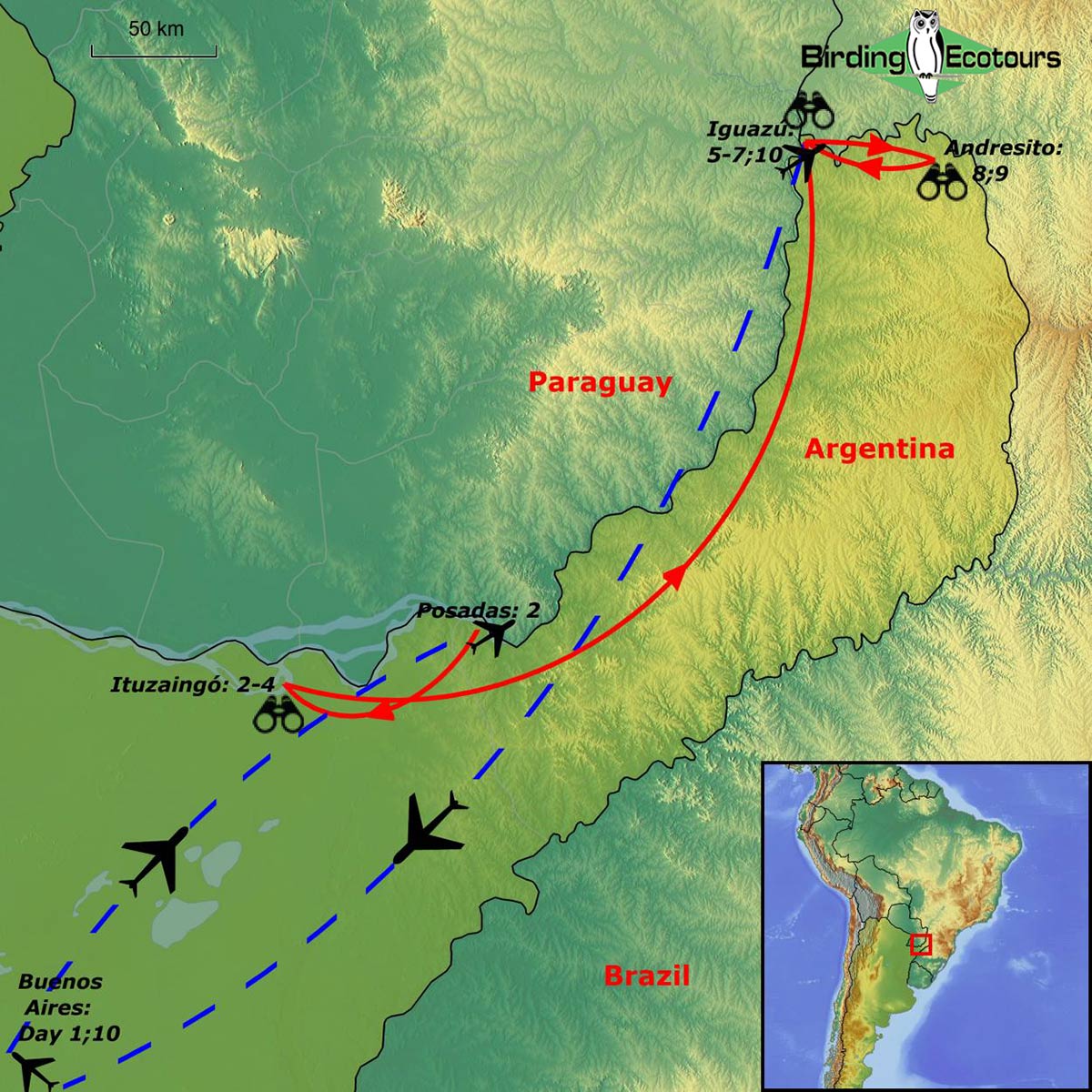Birding Northeast Argentina: Iberá Marshlands and Iguazú National Park
Go to: Argentina Birding Tours | Birding Tours in the Neotropics | All our birding tours
Birding Northeast Argentina: Iberá Marshlands and Iguazú National Park
November 2025/2026
In the Corrientes province in the north-eastern reaches of Argentina there is a vast region locally known as the Iberá Marshlands, which is the largest wetland area in South America after the Pantanal in Brazil. Iberá, or as the Guaraní natives call it “Shining Waters”, is a BirdLife International IBA and Ramsar Site as well as a national preserve. It covers an area nearly three times the size of the American Everglades and protects a multitude of fauna and flora occurring in such diverse habitats as lakes and swamps, palm groves, expansive grasslands, and climax forests. Over 330 bird species, including Jabiru, Snail Kite, Southern Screamer, Greater Rhea, Savanna Hawk, Black-collared Hawk, White Woodpecker, Scarlet-headed Blackbird, and Red-crested Cardinal, as well as other animals such as Capybara, Marsh Deer, Maned Wolf, Black-and-gold Howler Monkey, Big Hairy Armadillo, Yellow Anaconda, and Yacaré Caiman, are all to be found.
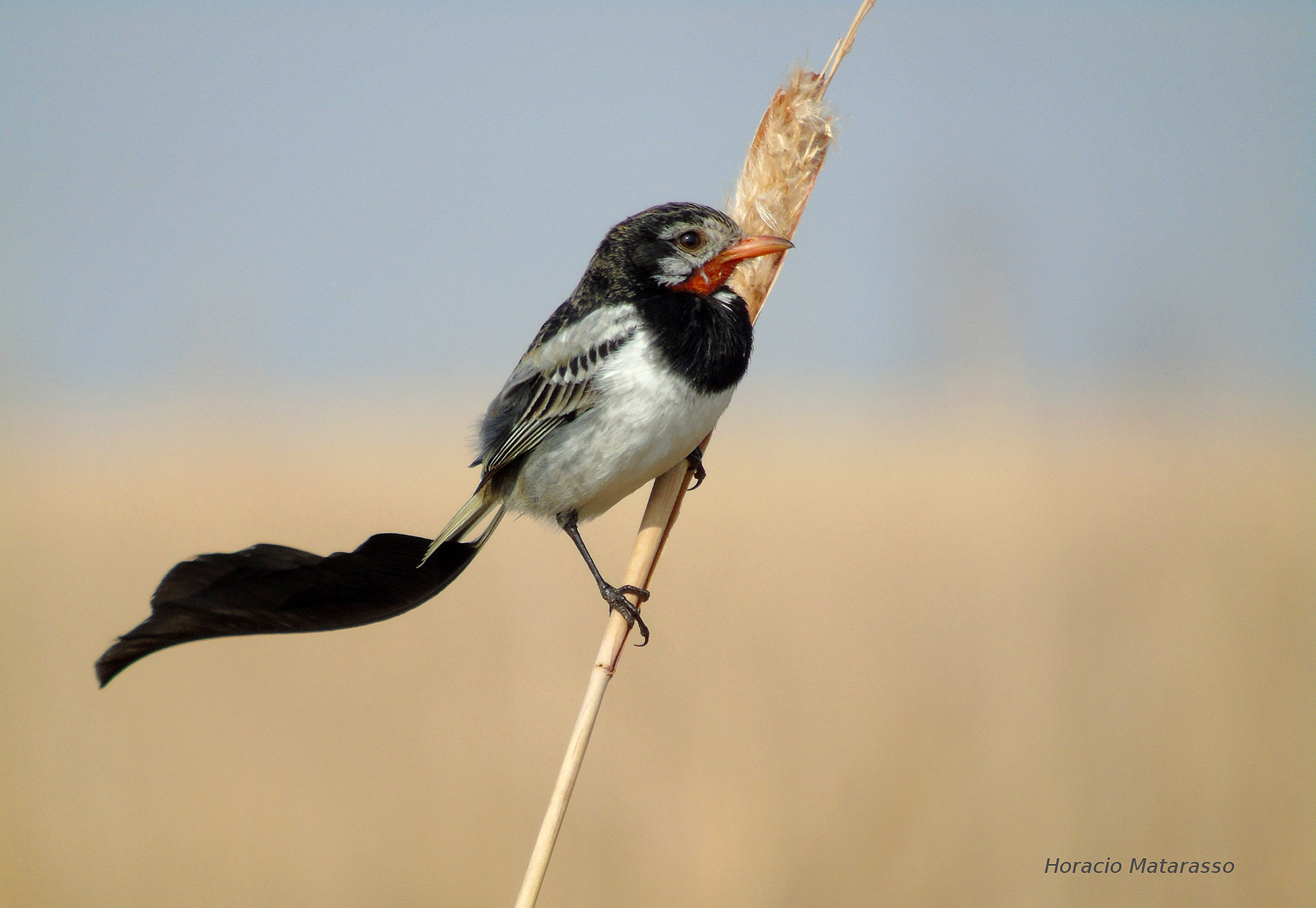
The legendary “Gauchos” (Argentine cowboys) also call Iberá home; these “cowboys” live and work on the vast cattle ranches known as “estancias”, where they still use their traditional equestrian culture in daily life. It’s on some of these “estancias” that we’ll be staying to explore the region, as the hotels are few and far between.
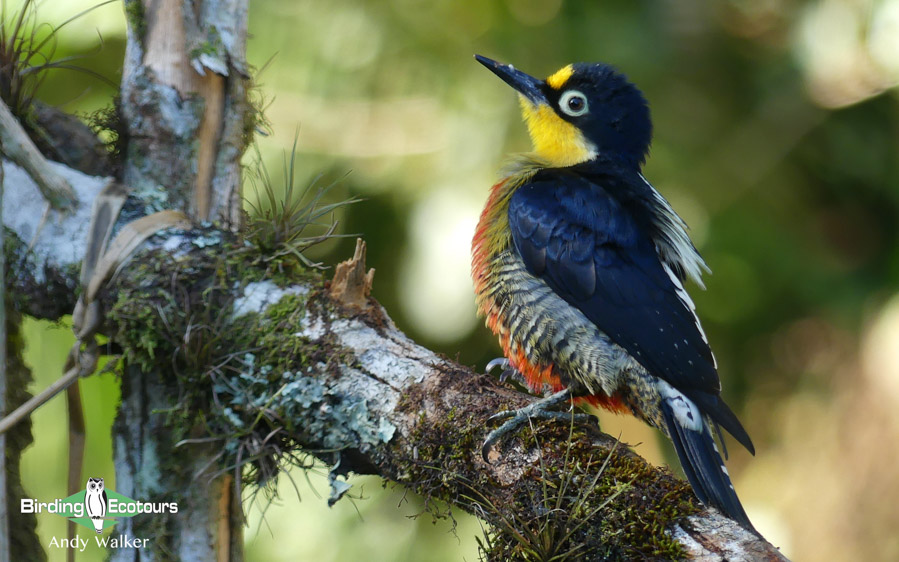
Come and explore this captivating paradise, combined with the fascinating Iguazú Falls, close to the border of Brazil. We’ll be spending three days in the spectacular Iguazú National Park on both the Argentinian and Brazilian sides, where birds include the likes of Black-fronted Piping Guan, Toco Toucan, Chestnut-eared Aracari, Scaly-headed Parrot, Blue-winged Parrotlet, Plumbeous Kite, Tropical Screech Owl, Short-tailed Nighthawk, Great Dusky Swift, Scale-throated Hermit, Black-throated Mango, Fork-tailed Woodnymph, Surucua Trogon, Yellow-fronted Woodpecker, and Tufted Antshrike among many more.
This tour can be combined with our preceding Birding Tour Argentina: Northwest from the foothills to puna, and/or our following Birding Tour Argentina: Southern Patagonia – Los Glaciares National Park and Austral Rail.
Itinerary (10 days/9 nights)
Day 1. Buenos Aires
Today the group arrives in Buenos Aires flying into Ministro Pistarini (Ezeiza) International Airport and from there transfer immediately to our hotel for the night. After settling in we’ll do some afternoon birding at the Costanera Sur Ecological Preserve; here we could expect to find species such as Red-crested Cardinal, Coscoroba Swan, Silver Teal, Spot-flanked Gallinule, Nanday and Monk Parakeets, Southern Crested Caracara, Pampa Finch, Spectacled Tyrant, and Black-and-rufous Warbling Finch among many more as we explore the wetlands, grasslands, and woodlands.
Overnight: Hotel Dolmen/Hotel Pestana, Buenos Aires
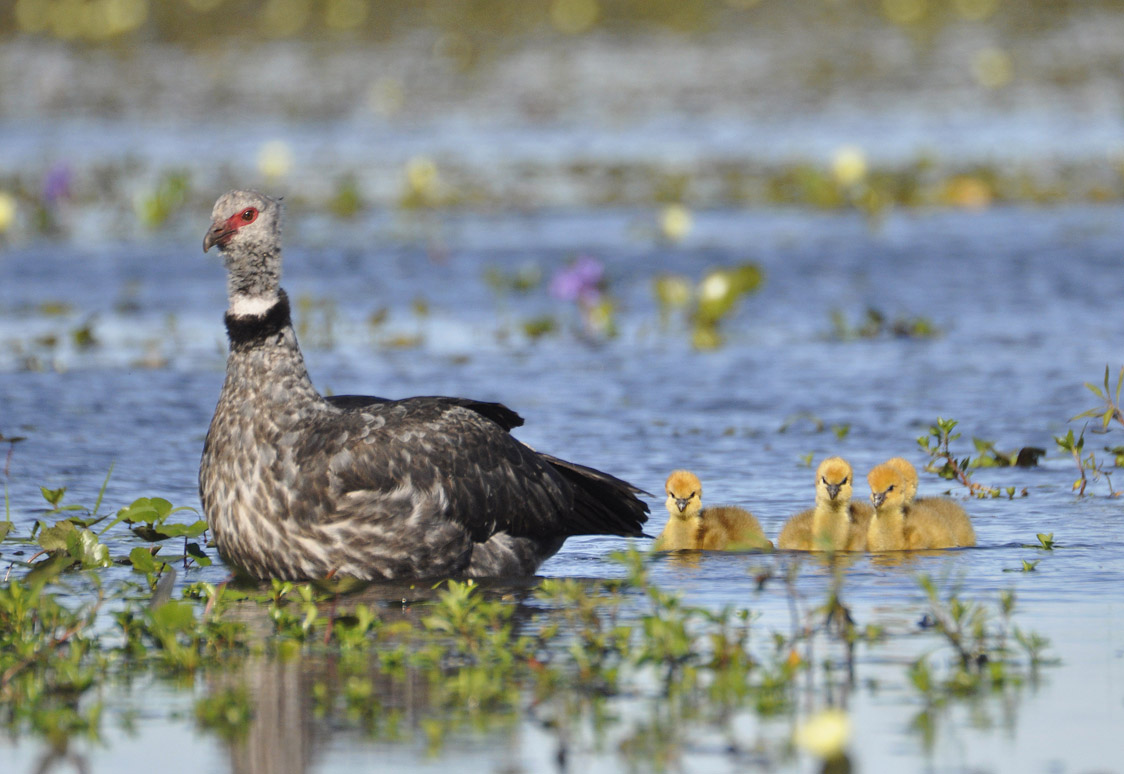
Day 2. Buenos Aires to Posadas
We’ll start the day with a transfer flight to Posadas. Our base for the next three nights will be the Estancia San Juan Poriahú. This ranch is found in the northwest corner of the Iberá Marshlands, which is considered the Argentinean Pantanal. A great variety of habitats such as savannas, forests, lakes, and wetlands means a great variety of birds, such as Greater Rhea, Red-winged Tinamou, Savanna Hawk, Burrowing Owl, Southern Screamer, Brazilian Teal, Anhinga, Roseate Spoonbill, Wood Stork, White-necked Heron, Maguari Stork, Bare-faced Ibis, and Snowy Egret. Spending time in the grassland habitat we could get lucky with White Monjita, Pampa Finch, and Picui Ground Dove. Our last excursion for the day will be a nocturnal venture after dinner, when we’ll be looking for Crab-eating Fox, Tropical Screech Owl, and Scissor-tailed Nightjar.
Overnight: Estancia San Juan Poriahú, Ituzaingó
Day 3. Iberá Marshlands
We’ll start the day in search of the largest rodent on the planet, Capybara, as we take a boat ride in the Iberá Marshlands. Birdlife here includes Black-collared Hawk, Long-winged Harrier, Jabiru, Wattled Jacana, Black-capped Donacobius, Yellow-chinned Spinetail, and the recently described endemic Ibera Seedeater, as well as many more. We’ll spend our afternoon exploring the indigenous forests, where we might have an opportunity to photograph groups of Black-and-gold Howler Monkeys as we search for birds such as Dusky-legged Guan, Pale-crested Woodpecker, Blue-crowned Parakeet, White-winged and Green-backed Becards, Yellow-billed Cardinal, Ultramarine Grosbeak, Little Nightjar, and White-throated Hummingbird.
Overnight: Estancia San Juan Poriahú, Ituzaingó
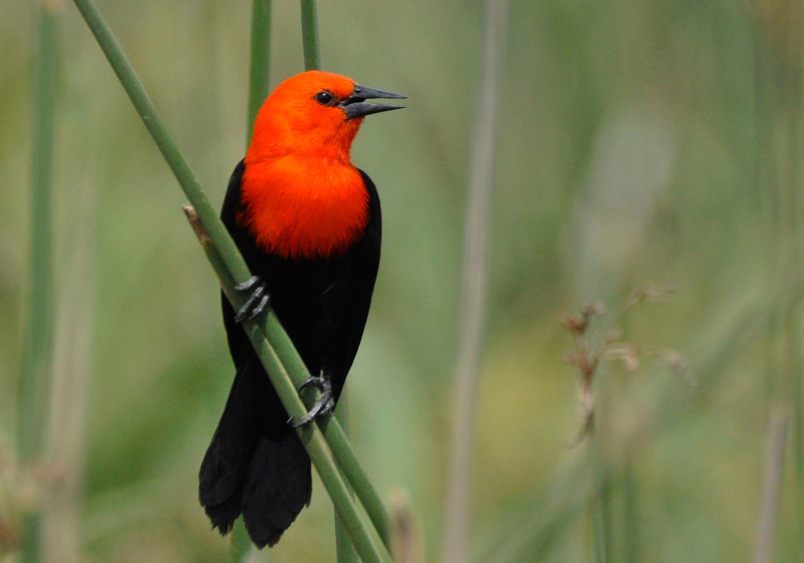
Day 4. Iberá Marshlands
We spend another day in this amazing area as we keep adding more birds to our list, such as Southern Screamer, Ultramarine Grosbeak, Purple and Azure Gallinules, Strange-tailed Tyrant, Double-collared Seedeater, Pearly-bellied Seedeater, Green-winged Saltator, Yellow-rumped Marshbird, Scarlet-headed Blackbird, and the endangered Saffron-cowled Blackbird.
Overnight: Estancia San Juan Poriahú, Ituzaingó
Day 5. Iberá Marshlands to Iguazú National Park
With a long drive north to Iguazú we’ll leave immediately after breakfast. En route we will be visiting the ruins of the 17th–century Jesuit Mission at San Ignacio. While admiring the ruins we’ll be scanning the surrounding area for Bat Falcon, Red-capped Parrot, Blue-winged Parrotlet, Striped Cuckoo, Scale-throated Hermit, Black Jacobin, Surucua Trogon, Campo Flicker, Swallow Tanager, Brown-chested Martin, White-rumped Swallow, and Saffron Finch. From here we have a six-hour drive to our hotel in Iguazú.
Overnight: Yvy Hotel de Selva, Iguazú

Day 6. Iguazú National Park
We’ll spend a full day walking and birding the forest trails of the Iguazú National Park, admiring the spectacular Iguazú Falls and the park’s Atlantic Forest. Here we have good chances of Plumbeous Kite, Bat Falcon, Toco Toucan, Surucua Trogon, Rufous-capped Motmot, White-eared Puffbird, Yellow-fronted Woodpecker, Blond-crested Woodpecker, Large-tailed Antshrike, and Swallow Tanager. We’ll also search for big flocks of Dusky Swifts before sunset as we visit the main falls of the Iguazú system, known as Devil’s Gorge.
Overnight: Yvy Hotel de Selva, Iguazú
Day 7. Iguazú National Park
With another full day of birding in the Iguazú National Park we’ll focus on finding new additions to our list. We’ll be cleaning up on species such as Black-fronted Piping Guan, Green-billed Toucan, Squirrel Cuckoo, Speckle-breasted Antpitta, Rufous Gnateater, and Blackish-blue Seedeater. Our afternoon birding session will be spent on a private property in Puerto Iguazú, known as Hummingbird Garden, where we can find over 12 species of hummingbirds coming to the feeders as well as various tanagers and finches. Birds to expect here include Blue-tufted Starthroat, Black-throated Mango, Green-crowned Plovercrest, Violet-capped Woodnymph, Rufous-throated Sapphire, Festive Coquette, Chestnut-bellied Euphonia, Golden-rumped Euphonia, and Chestnut-backed Tanager, to name just a few.
Overnight: Yvy Hotel de Selva, Iguazú
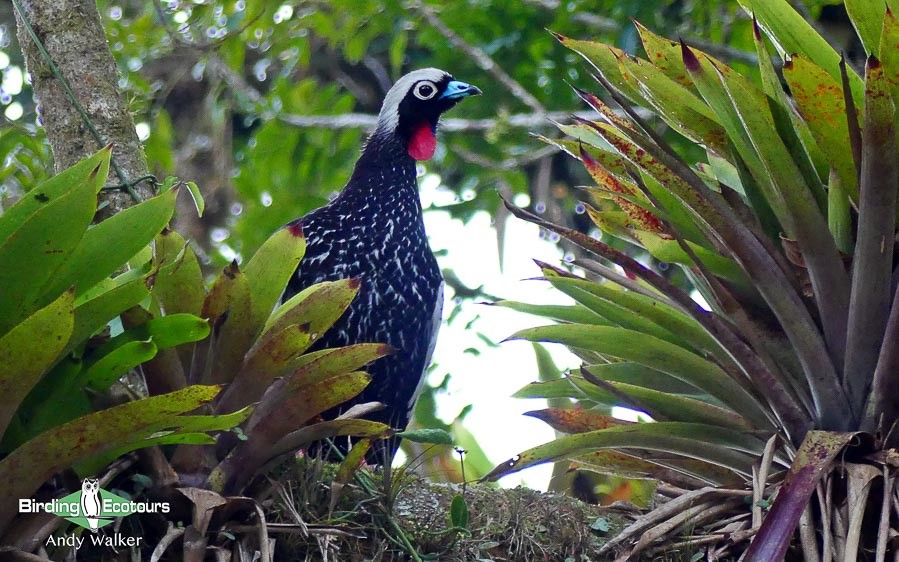
Day 8. Iguazú to Surucua Reserva & Ecolodge
Today we make our way east through the Atlantic Forest of Iguazú National Park in search of Solitary Tinamou, Green Ibis, Black-and-white Hawk-Eagle, Violaceous Quail-Dove, and Saffron Toucanet. We end our drive at the Surucua Reserva & Ecolodge on the Iguazú River, a luxurious private property. Habitats here include palmito, bamboo-cane groves, and rainforest. We’ll spend the rest of the day birding the surrounding area in search of species such as Orange-breasted Falcon, Black-fronted Piping Guan, Rusty-margined Guan, Spot-billed Toucanet, Rufous-capped Motmot, White-necked Puffbird, Blond-crested Woodpecker, Sharp-tailed Streamcreeper, and Chestnut-crowned Becard. We’ll spend some time looking for owls and nightjars after dinner.
Overnight: Surucua Reserva & Ecolodge or Yacutinga Lodge, Andresito
Day 9. Urugua-í Provincial Park
A full day birding around our lodge and at Urugua-í Provincial Park will provide us with birds such as Grey-bellied and Zone-tailed Hawks, Black Hawk-Eagle, Grey-fronted Dove, Scaly-headed Parrot, Pavonine Cuckoo, Surucua and Black-throated Trogons, Robust and Helmeted Woodpeckers, Buff-fronted Foliage-gleaner, Black-billed Scythebill, Giant Antshrike, Bertoni’s Antbird, and Red-ruffed Fruitcrow. We’ll spend another owling session after dinner in search of Mottled, Black-banded, Buff-fronted, and Spectacled Owls among other nocturnal species.
Overnight: Surucua Reserva & Ecolodge or Yacutinga Lodge, Andresito
Day 10. Transfer to Buenos Aires, departure
Today is mostly a travel day as we’ll be driving to Puerto Iguazú to catch our flight to Buenos Aires, where everyone will connect with their international flights or continue onto their next birding trip in Argentina.
Please note that the itinerary cannot be guaranteed as it is only a rough guide and can be changed (usually slightly) due to factors such as availability of accommodation, updated information on the state of accommodation, roads, or birding sites, the discretion of the guides and other factors. In addition, we sometimes have to use a different international guide from the one advertised due to tour scheduling.
Download ItineraryNORTHEAST ARGENTINA: IBERÁ MARSHLANDS AND IGUAZÚ NATIONAL PARK: TOUR-SPECIFIC INFORMATION
PLEASE CLICK HERE FOR GENERAL INFORMATION PERTAINING TO OUR ARGENTINA TOURS IN GENERAL
This exciting Argentinian birding tour will allow you to explore the fantastic variety of habitats of northeast Argentina. We will focus on the vast Iberá Marshlands, a wetland second in size in South America only to the Pantanal, in Brazil. We will also explore the fascinating Iguazú Falls, close to the border of Brazil and some interesting habitats in the region. The list of target birds is long and includes Southern Screamer, Geater Rhea, Jabiru, Black-fronted Piping Guan, Great Dusky Swift, Toco Toucan, Vinaceous-breasted Amazon, White Woodpecker, Helmeted Woodpecker, Tufted Antshrike, Araucaria Tit-Spinetail, and Scarlet-headed Blackbird. The following information, in combination with the Argentina general information (see link at top of the page), will help you prepare for your Northeast Argentina birding tour.
ARRIVAL INFORMATION
Please e-mail us ([email protected]) or “contact us” in a different way, before you book any flights, as the information shown here is just an initial guide.
Our tour will start in the city of Buenos Aires at Ezeiza (EZE) International Airport which can be reached with direct flights from many global locations. You might wish to consult your travel agent to book your most convenient flight (and contact us if you want guidance). Our local team will be waiting for you at Buenos Aires airport, with a small board with the Birding Ecotours logo and will then transfer you to your hotel.
If you prefer to rest before the start of the trip, we suggest you arrive a day or so early to have plenty of time to recover after long fights, jetlag, etc. Please let us know at your earliest convenience if you wish us to book you into accommodation for extra nights before (or after) the tour.
In case you arrive on an early flight, you will be transferred to the hotel but may have to wait until check in is available. For an early check in you might be charged extra directly by the hotel; this cost is excluded from the Birding Ecotours tour price. Regular check in is at 15.00 hrs.
Please remember to keep your luggage tags, as they are required to exit the terminal at Buenos Aires airport so staff can match them with the bags exiting the airport.
When filling out the customs declaration form, or if you are asked at the immigration desk, please use the below address for the hotel:
Hotel Pestana Buenos Aires, Carlos Pellegrini, 877, C1009ABQ Buenos Aires. Tel: (+54) 011-5239-1000.
DEPARTURE INFORMATION
After an exciting time birding the Iguazú Falls and in Misiones Province, we will fly from Puerto Iguazú back to Buenos Aires, where the tour will end.
Note that there are several airports in Buenos Aires and our domestic flight might return to a different airport to where your international flight might depart from. We won’t have the exact information until closer to the tour dates. The airports we usually use are about an hour’s drive from each other, and you will need to check in for your international departure three hours before departure time.
It might be safer, to prevent rushing between airports and in case of domestic flight delays, or last minute schedule changes, to book an extra night at the end of the tour in Buenos Aires with your international departure the next day.
DOMESTIC FLIGHTS
Our tour includes two internal flights from Buenos Aires to Posadas (1.35 hrs. flight) and from Puerto Iguazú to Buenos Aires. (1.50 hrs. flight). Aerolineas Argentinas (AR) is a governmental airline but the biggest and strongest in Argentina with the greater frequency of flights within the country at date. We are likely to use this airline but may at times use others. Luggage allowances for these flights are likely to include:
- 1x piece (small bag such a laptop case) of 3 kg. (6.6 lbs.) for carry-on
- 1x bag 8 kg. (17.6 lbs.) carry-on luggage
- 1x piece of luggage of 15 kg. (33 lbs.) as checked luggage
For extra luggage or excess weight, the airline charges (at the time of writing, January 2025) an additional fee to the air ticket of approximately US$ 1.50 per kilogram (2.2 lbs.). This fee is not included in the tour price. The payment is made by the person at the moment of check in with the airline and it can be paid either with Argentine Peso cash (the Argentinean currency) or credit card.
If you carry cameras, be sure they fit in standard camera bags which normally are fine as carry-on baggage. The bag size allowed is 55 cm x 35 cm x 22 cm (22 in x 14 in x 10 in). Cameras in larger cases, or other equipment such as professional videography camera and lens, flash units, etc. will probably be required to be checked in as cargo hold under their fragile category or with crew luggage or baby car compartments. Sending camera equipment into the hold luggage (or any other form of transportation) is entirely at your own risk.
We will book the domestic flights for you to make sure the whole group is on the same flight and the costs for these flights will be added to your tour balance. If we can purchase flight tickets in advance with a higher weight limit we will do, and we will let you know when we make the bookings.
PHYSICAL REQUIREMENTS AND PACE
We qualify this trip as easy to moderate going. Most of the birding consists of walking along roads, some of which are unpaved dusty roads, paved roads along highways, and forest trails which are normally flat surface with some steps up and down but mostly flat. Forest trails may be rooty or wet (after rain). This Northeast Argentina tour however, does not require long, hard mountain walks as is the case for some other Birding Ecotours destinations like Guatemala or Ecuador.
Keep in mind that (as is usual on birding trips) we need to be awake very early in the mornings, and pre-dawn starts are in order each day. We normally spend the whole morning birding in the field, have lunch at midday and then provide opportunities for a little rest before continuing our birding in the afternoon. Your guide will sometimes invite you to look for owls at night, but this is an optional activity that you can skip if you feel tired. Some people prefer to rest, skipping birding in the afternoon; this can be done at those lodges when we are staying more than one night. When we do birding stops while traveling from location to location, people who feel tired do not have to follow the group and can remain in the vehicle.
There will be several lengthy drives between our main birding destinations, especially from Iberá Marshes to Iguazú which will be the longest at approximately seven hours (as we need to travel around 500 kilometers / 300 miles). These drives, however, allow you to enjoy the interesting countryside and maximize chances for unexpected birds and wildlife along the drives.
We will be visiting the Iguazú Falls on the Argentinean side, this involves a full morning hiking (mostly on flat surfaces) for about 3 km (1.8 miles) round trip.
Some people can be affected by the humidity and heat on this trip and maintaining hydration is incredibly important. Please see the weather section, below.
WEATHER
Be prepared for hot and humid weather while on the main tour. The temperature can reach 40°C (104°F) and be quite humid. Temperatures in Buenos Aires could be much lower, especially if the wind is blowing from the south and in the evenings when temperatures could drop to 10oC (50oF). We recommend keeping a jacket handy when you arrive in the city.
While not necessarily to be expected, localized tropical storms can occasionally hit the Atlantic Forest in the Misiones province, (e.g. in Iguazú). If such storms occur it is safest if we retreat to our lodges or vehicles to seek immediate shelter. These tropical storms can bring heavy rain with hail and strong wind (strong enough to break tree branches). In the worst case scenario, we may miss a few hours of birding if such a storm occurs during birding time.
MONEY AND ATM
We recommend bringing United States Dollars (US$) or Euros (€) cash which are easily exchanged into Pesos Argentinos (Argentine Pesos) at Buenos Aires, Posada, and at Puerto Iguazú airports, all of which are visited during this tour.
You can pay with a credit card at Iguazú National Park for shopping and souvenirs, and at our hotels in Buenos Aires and Iguazú for drinks, laundry, and any other personal expenses etc. The other lodges we visit during the tour, in more remote areas, usually accept only cash. If you are a customer based in Brazil, you can use and exchange Brazilian Reals (R$) broadly in the Iguazú area.
ATMs deliver Argentine Peso bills for withdrawal and it is best to do this at the airports we visit during the tour. ATMs will be scarce along the tour route, and we cannot change the day-to-day plans to drive to towns looking for financial institutions.
It might be possible to exchange US$50 or US$100 bank notes into local currency in some of the hotels we visit, though this is not guaranteed and shouldn’t be taken for granted. Making money exchanges at airports is probably for the best.
Be sure to bring new US$ or € bills for cash exchanges. Avoid bringing old or visibly damaged notes (e.g. broken tips or ink marks, etc.), as these will likely not be accepted by financial institutions.
ACCOMMODATION
We will stay in average accommodation on this tour and, in some cases, we will strategically use the only existing accommodation options in remote areas within the birding route for best logistics and birdwatching purposes.
Some lodges do not provide facilities such as air conditioning and are rather basic. Some accommodation will provide fans instead. The accommodation in Iguazú will be the best of the tour, provided with good quality air-conditioned rooms.
LAUNDRY
We expect that laundry services should be available at our hotel in Buenos Aires as well as at Estancia San Juan Poriahú, Iberá marshlands and Yvy Hotel de Selva, Iguazú. We do not expect laundry services to be available in the San Pedro and Andrecito areas. Laundry fees are not included in the tour price and need to be paid individually and locally at the time of the service.
HEALTH, VACCINATIONS, AND PESTS
We recommend that you consult your doctor or local travel clinic regarding vaccine requirements approximately two months prior to your bird tour to Argentina.
Everyone visiting Argentina should be up to date with standard vaccinations and boosters, like Measles-Mumps-Rubella (MMR), Diphtheria-Tetanus-Polio, Seasonal Flu, Covid-19, and (if possible) Dengue Fever (see below). Most travelers should also be up to date with Hepatitis A, Rabies, Typhoid, and Yellow Fever vaccinations.
There is a risk of Yellow Fever in some parts of Argentina, including where this tour visits, so it is recommended that if you are below 60 years of age, you are vaccinated for Yellow Fever (though please note there are some age categories (60+) where vaccination is not necessarily recommended, so please consult with your local travel clinic for specific personal advice). If you’ve had the Yellow Fever vaccination before, there is no need to repeat it as the certificate is now valid for life, no longer only 10 years, as was considered to apply pre-2016. You will need to make sure you have a Yellow Fever certificate, as you may be required to show authorities in other countries after your visit to Argentina.
There is a no risk of Malaria across Argentina, but we ask you to follow the advice of your doctor and any Centers for Disease Control and Prevention (CDC)/national governmental body advice.
Since 2022 there has been an outbreak of Dengue Fever in Northern Argentina, and cases have been recorded along several districts of Buenos Aires city during the austral summer in 2024 for the first time! Even though we have not had any cases of Dengue Fever during our tours and it is uncommon, we ask you to be aware of the following advice.
To prevent mosquito bites, we recommend wearing long-sleeved shirts and long pants, treat clothes with repellents like permethrin or use permethrin-treated clothing (such as Buzz Off), and use an EPA-registered mosquito repellent containing DEET. Please refer to the CDC website. A provisional vaccine against dengue is available for some folk now, see “About a Dengue Vaccine | Dengue | CDC”. Since 2024 and 2025 in some countries, such as the UK, this might be available to the general public, but it might not be broadly available except for people of certain groups. If you are not eligible for the vaccination (which will be most people), we recommend continuing with precautions to prevent mosquito bites in the first place.
DANGEROUS ANIMALS AND PLANTS
Snakes are seldom seen during the tours but, when seen, we always hope to see them at a safe distance and in a controlled manner. South American Rattlesnake can be found at cattle ranches and rocky areas in dry deciduous forest, where it is rare. We have never seen one on our tours. Vipers such as the infamous Fer-de-lance (Bothrops group) are present in the region, with at least two full species present in the Atlantic Forest. Again, they are rarely seen, however we ask you to follow your guides’ advice, don’t leave the group while walking along trails, and be careful with where you put your hand and with your steps.
There are at least two kinds of itching plants in the Atlantic Forest of northern Argentina. If we see any we will point them out to you so you are aware of their identification. We ask you to be careful and not touch plants you are not familiar with, as some of them may host biting insects such as ants and wasps.
Do not walk with sandals on grassy areas, around lodge clearings or, of course, in the forest, as doing so will result in a greater chance of coming into contact with annoying or hazardous creatures such as ants, wasp, bees, and scorpions.
WHAT TO BRING
The following is a list of some items that might be useful to bring on this tour:
- Sunscreen (factor 50+)
- Lip balm (with sunscreen)
- Hydrating facial cream (in case of sunburn)
- High concentration DEET insect repellant
- Umbrella and waterproof jacket
- Walking stick (optional, particularly necessary if you are at all uncertain on your feet)
- Sunhat or baseball-style cap
- Jacket or fleece for cool weather early in the mornings
- Long sleeve shirts
- Short sleeve shirts or T shirts to be comfortable at lodges
- Hiking boots/shoes
- Sandals to be comfortable in your room (but not for birding/walking in forest etc.)
- Personal medication and prescription in case you need to buy some extra
- Torch (flashlight) and/or headlamp (headtorch), and spare batteries
- Universal electric adaptors for all outlets
- An extension cable (e.g. 3 meters / 10 feet long) with a surge adaptor (optional) can be useful for providing multiple charging outlets, which can sometimes be located in inconvenient locations in the room (e.g. far from the bedside tables/desk etc.)
- Small hand towel/bandana to clean your own sweat in the field
- Plastic zipper (Ziplock) bags to protect your documents like passports, cash etc.
- Personal amenities
Download Northeast Argentina: Iberá Marshlands and Iguazú National Park Birding Tour Information
‘My trip to Argentina was amazing! We always see huge numbers of species on Birding Ecotours trips, and this one was no exception. Add to that the scenery in the Andes, among the most spectacular anywhere; meanwhile, accommodations, arrangements, and guiding were fully up to Birding Ecotours’ usual standards. Eduardo is a great guide, always watching out for our welfare as well as finding the birds, and Diego was one of the more knowledgeable – and friendly – local guides we have had in years. As my trip focused on the northwest, I look forward to visiting the rest of this wonderful country soon.’
Bill
